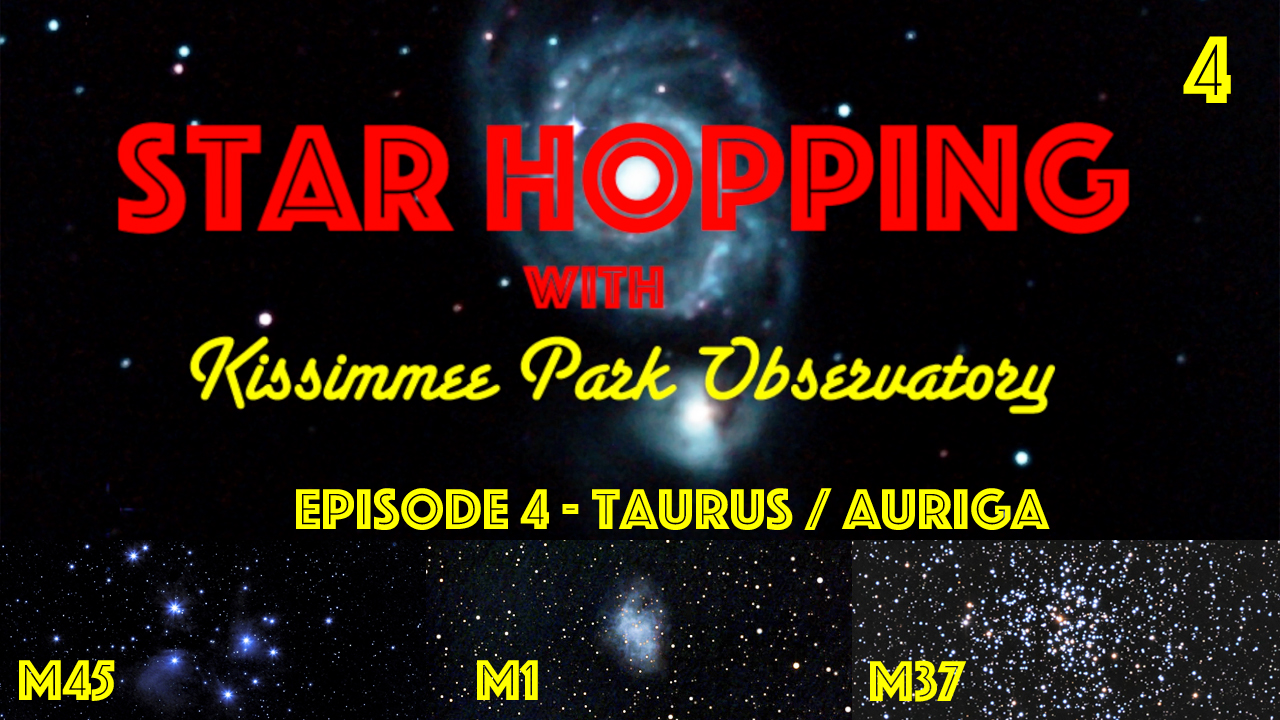In Episode SH004 of Star Hopping…
In this week’s program we’ll focus on the Taurus & Auriga area of the sky, and will locate the Pleiades, the Crab Nebula, and the Open Cluster M37.
Intro
In this episode we’ll be looking at the region of the sky containing the constellations of Taurus and Auriga, another area that’s thick with deep sky objects. This is because of the close proximity of the Milky Way, which runs right through Auriga. We also have two of the brightest stars in the sky in each of these constellations, with orange Aldebaran in Taurus, sometimes called The Eye of the Bull, and the even brighter Capella in Auriga. You can’t miss either of these beacons as they rise in the eastern sky around 10:30 PM in late October and early November.
The Magnitude Scale
Capella is the sixth brightest star in the sky, where Aldebaran comes in at number 14 on the brightest stars list. Astronomers have a measurement that they use to quantify the brightness of stars, called the Magnitude scale. Oddly, this scale runs backwards, with brighter stars having lower magnitude numbers. The very brightest objects in the sky have magnitudes that are actually negative numbers. The brightest star in the sky, Sirius, is magnitude -1.6. Vega, in the constellation of Lyra, that we discussed in the last episode, is magnitude 0. Capella is also a magnitude 0 star. Aldebaran is a bit fainter at magnitude 0.8.
In the city, light pollution limits visibility to about third magnitude stars, but under very dark skies you can see stars down to about 6th magnitude, and these number in the thousands. So there are many, many more faint stars in the sky than bright ones, and even more than that are too faint to be seen with the naked eye…
CLICK >>> Watch this Episode on YouTube!
Let us know your Questions and Comments!
Please feel free to leave a question or comment below, and we will respond as quickly as we can. You can also reach out to Dave on Twitter @StarHoppingMan.
Connect with Star Hopping!
We would love to have you join us on our various social media sites, and subscribe to our newsletter. Visit our Contact page to connect with us!
Credits for this Episode
- Star Chart Images & Simulations Courtesy of SkySafari Astronomy http://SkySafariAstronomy.com.
- Pleiades image by David Hearn / Kissimmee Park Observatory
- Crab Nebula image by David Hearn / Kissimmee Park Observatory
- M37 image by Siggi Kohlert


